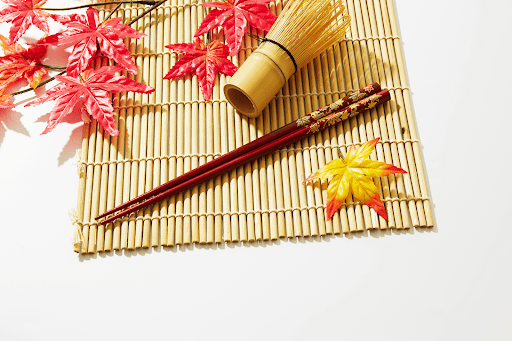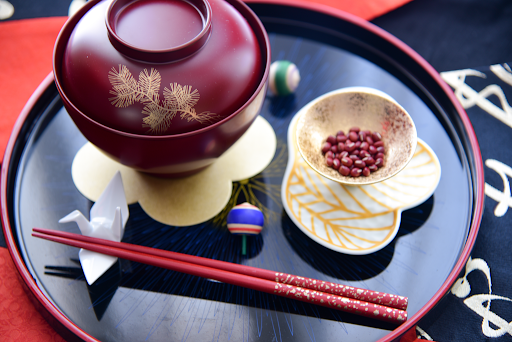Table of Contents
ToggleRegional specialties are plenty in Japan, not just when it comes to food. Over centuries certain regions or cities have built a reputation for specific crafts, and the small town of Obama in Fukui Prefecture is no different. Home to only 30,000 people, the town’s economy mainly relies on the fishing industry. Rather than for its seafood or the fact it shares a name with a former U.S. president however, the town is known as the prime manufacturer for lacquered chopsticks.
A Unique Kind of Chopstick

Obama now produces about 80% of all of Japan’s lacquered chopsticks, with the town having pioneered a unique way of making them about 400 years ago. Obama’s particular style of lacquer chopsticks is called wakasa in Japanese, named after the bay upon which the city looks out onto. A local lacquer artist had the idea of showing the beauty of the local seabed, by using precious natural materials like shells or pearls.

The result was labeled hoseki nuri, literally jewelry coating. These chopsticks are a far cry from simple wooden ones and require days or even months of labor by a skilled artisan. Wakasa chopsticks are costly and therefore usually treasured and kept for a lifetime.
Interested in discovering Japan through trying out traditional Japanese snacks and tea? Sakuraco sends unique seasonal and regional Japanese snacks and home goods, including chopsticks from Tanaka Hashiten, straight to your door.
The Wakasa Process
While there are different grades to wakasa chopsticks, the basic recipe doesn’t change – The chopstick base is adorned with precious natural materials such as pearl, shells, seeds, leaves, and gold and silver leaf. Layers upon layers of different colors of lacquer are then added and left to dry. Lacquer takes a notoriously long time to dry, with one layer taking about one week to cure.

Once all dry, the applied layers are sanded down, revealing different colors and materials in the process. Depending on how many different materials and colors are used, the process can take up to half a year, resulting in the final product truly representing a work of art which also contains each artisan’s personal touch.
The end result is a one of a kind set of chopsticks, that is still usable due to the durable high quality wood and varnish. Wakasa lacquerware is resistant to heat and water, despite its beautiful, almost fragile appearance. Wakasa chopsticks have been made like this in Obama since the 1500s, and overall the process has changed very little. The idea behind wakasa is to create a bridge between the person eating and the natural world through the natural materials used.
The History of Tanaka Hashiten
Tanaka Hashiten began making lacquered chopsticks in 1948, with the aim of continuing Obama’s wakasa legacy. Starting with a small workshop focusing on the highest grade of wakasa, that with the longest production time, they eventually branched out into simpler lacquered chopsticks and tableware like bowls as well. They also frequently collaborate with ceramic manufacturers in nearby Gifu Prefecture.

While they’ve never departed from handmade wakasa production, they also took the unique step of developing their own machinery for producing lacquered chopsticks. Refining this process took years of fine-tuning, but has allowed Tanaka to produce beautiful, multi-layered wakasa chopsticks at a much more affordable price point than the individual production process.
It takes around five years of training to become a wakasa lacquer artisan, and in recent years there has been a lack of successors. Current artisans are aging, and since handmade wakasa chopsticks are expensive and take a long time to make, the art as a whole is at risk of disappearing. Tanaka’s Machine manufacturing helps bridge this gap, while allowing them to keep the tradition of handmade wakasa alive.
Tanaka and Sakuraco
We aim to bring our subscribers the full experience of traditional Japanese sweets and snacks, and carefully crafted Japanese tableware is an integral part of Japanese afternoon tea. There are also many Japanese dishes full of symbolism, which need to be served with specific tableware.

We are proud to be able to regularly partner up with Tanaka Hashiten to bring our Sakuraco subscribers high quality lacquered chopsticks, as well as tableware, like bowls, trays and cups. We exclusively work with local, history-rich businesses in Japan, to help support regional communities and precious traditions.
Have you encountered wakasa lacquered chopsticks before? If not, would they be something you’re interested in? Let us know in the comments below!











2 Responses
Lacquered chopsticks or even a small lacquered tray or bowl would be lovely!
Most definitely, Living in Colorado doe give us access to Japanese quality accessories.
I would love to have access to many of the items shared.